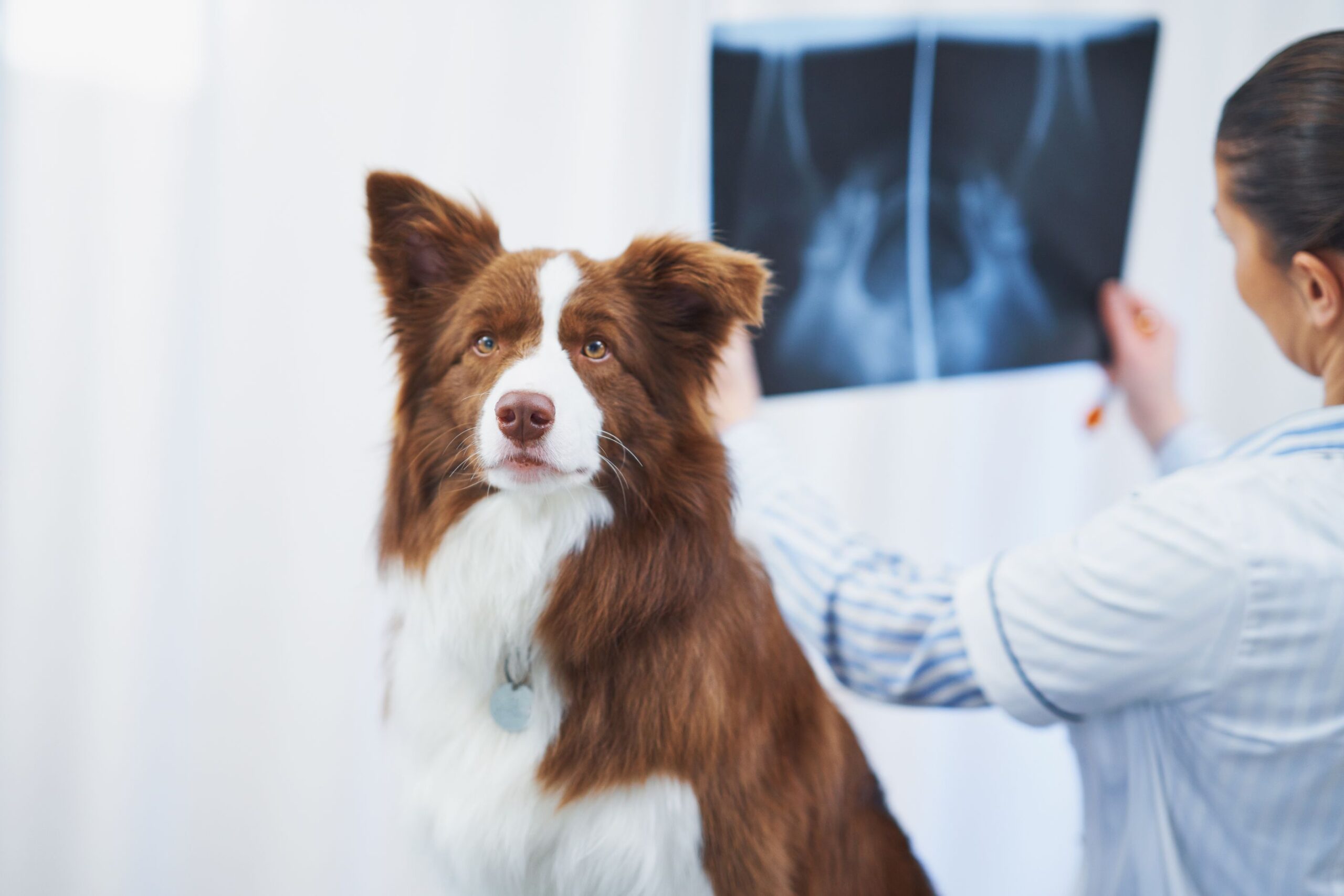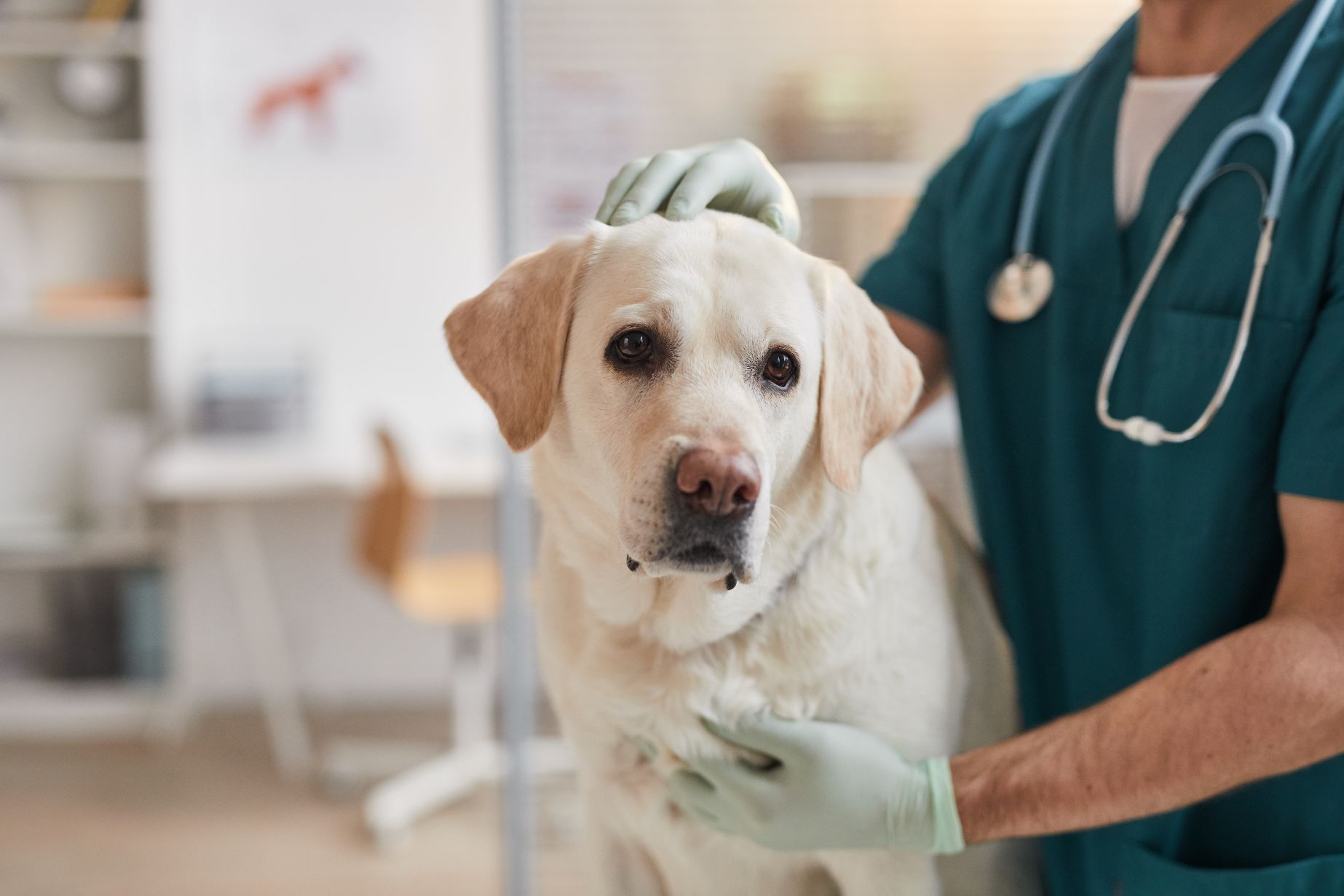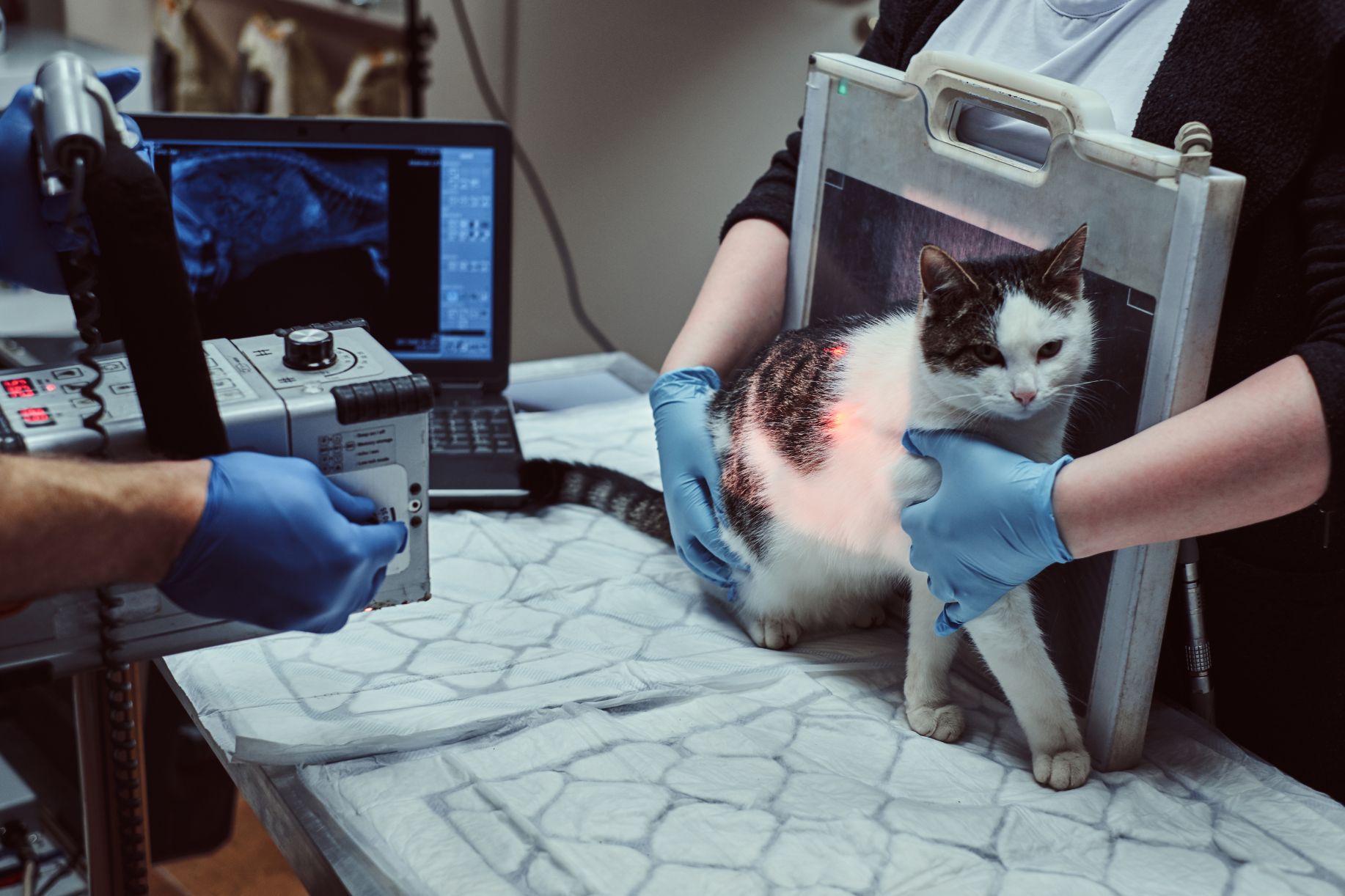Pet Diagnostics & Imaging Services

Pet Diagnostics in Flagstaff

Pet Imaging Services in Flagstaff
In recent years the life expectancy of our pets has increased, and while pets living longer is great news it also means that owners have to keep new health considerations in mind. As our pets get older they have higher risks of developing certain diseases like cancer, breathing issues, and mobility problems. With serious diseases, early detection is key to effective treatment, but you can’t always see what is going on inside of your pet’s body. Regular checkups involving diagnostic tests of blood, urine, and feces, as well as imaging services like X-rays and ultrasounds are integral to catching the warning signs of serious diseases. These services offer immediate results so that your pet’s primary veterinarian can quickly come up with treatment plans specifically tailored for your pet’s needs. With early detection and quick, proper treatment, you can increase your pet’s quality of life and give them a better chance of recovery.

Radiography (Digital X-Rays)
Veterinary radiography is an advanced medical technique that uses diagnostic imaging machines like a digital X-ray machine to produce a radiograph– an X-ray image– used to identify, diagnose, and treat health issues in pets. Radiology works by sending X-rays– high-energy forms of electromagnetic radiation– through your pet to allow your veterinarian to see inside of your pet’s body without the need for invasive surgical procedures. These X-rays easily pass through soft tissues like fur, skin, fat, and muscle but are absorbed by more dense tissues like bone. An image is formed by the “shadows” cast by the dense tissues.
Digital X-rays are used to detect a variety of health issues in pets. Bone fractures, tumors, foreign objects in your pet’s digestive tract, and dental problems can all be identified from an X-ray scan.. Many of the health issues that affect our pets start inside of their bodies and do not show any early, external warning signs. Early detection of serious health issues is key for your veterinarian to formulate an effective treatment plan, and to give your pet its best chance of recovery. Even though your pet is exposed to some amount of radiation, the amount is very small, and the rewards of potentially catching a life-threatening illness early enough to treat far outway the minimal risk of developing any health issues from exposure.


Blood, Urine & Feces Testing
Lab tests of your pet’s blood, urine, and feces are an important diagnostic tool that allows your veterinarian to monitor the health of your pet and catch serious health issues that may otherwise go unnoticed. Regular blood tests allow your pet’s veterinarian to analyze blood counts and blood chemistries that can be used to identify complex problems within your pet’s body. Blood counts quantify the number of white blood cells, red blood cells, and platelets as well as the shape and health of your pet’s blood cells. This provides information about the health of your pet’s immune system and oxygen-carrying capacity.
By analyzing blood chemistry, your veterinarian can look for warning signs of problems in specific organs. Urinalysis is the diagnostic test that analyzes the chemical and physical properties of your pet’s urine. Urinalysis is important for assessing the health of your pet’s urinary system and can be used to diagnose certain diseases like diabetes. Fecal exams are inspections done on your pet’s feces under a microscope. They are most commonly done to identify any parasites that may be present in your pet’s stool sample and to diagnose any intestinal infections. Blood, urine, and fecal testing are all very good ways to make sure your pet is healthy and to catch early signs of health issues.


Ultrasound Imaging
Sonography is the use of diagnostic ultrasound imaging to produce a sonogram, or image, that allows the vet to see inside the body of your pet. An ultrasound scan works similarly to an X-ray but many key differences separate how ultrasound is used as a diagnostic too. Instead of sending high-energy electromagnetic radiation through the body of your pet, ultrasound uses high-frequency sound waves to produce images of structures inside your pet’s body. The sound waves that an ultrasound emits have less energy than X-rays so it can capture images of soft tissues, organs, blood vessels, and even blood flow inside of your pet’s body. This allows ultrasounds to be used as an important diagnostic tool for monitoring and identifying health issues that affect areas in the body that an X-ray cannot catch.
Some of the main reasons ultrasound imaging may be used would include monitoring pregnancy, evaluating blood flow, and detecting masses in soft tissues. Since the sound waves used in ultrasound are low energy, there are no known exposure risks to your pet. Just like with X-rays, the benefit of ultrasound is the ability to catch health issues early– before there may be any warning signs– to quickly formulate a treatment plan and give your pet the greatest quality of life and best chance to overcome any potential health issues.
FAQs About Pet Diagnostic Tests
How Much is a Radiograph for a Dog or Cat?
The cost of radiography for your pet can vary greatly depending on a variety of factors like whether sedation is required or the number of views required. On average you can expect the cost of an X-ray to fall somewhere between $100-$500.
How Much Does it Cost to Ultrasound a Pet?
The cost to have an ultrasound examination does not typically vary between cats and dogs, but the cost will depend on several factors. Depending on how in-depth the exam is will affect the cost of the test. Echocardiograms require several measurements and tend to cost more in comparison to simpler ultrasounds like pregnancy checks. Typically, costs range from $300-$500.
What Do Vets Test for in Blood Tests?
When conducting blood tests, veterinarians often perform a complete blood count which provides information on hydration, potential anemia, infections, blood clotting ability, and immune system response. Veterinarians also conduct blood chemistry tests that evaluate your pet’s organ health and hormone levels. These tests provide information used for the diagnosis of many diseases.
What Can a Vet Learn From a Pet's Urine Sample?
Urinalysis is an important screening tool that Veterinarians use to gain valuable insights about the health of your pet’s kidneys, bladder, liver, urinary tract, and other organs. Veterinarians examine the urine sample for blood, nitrites, ketones, glucose, and pH levels to look for any potential warning signs of health issues.
How Fresh Does a Stool Sample Need to Be for Testing?
For the most accurate results in your pet’s fecal examination, it is best to collect a fresh stool sample. It is recommended to bring the sample to your veterinarian within four to six hours after collecting it. Otherwise the sample will dry out and make it harder to diagnose any potential parasites that could be present.
